Hanging plants offer a practical and aesthetically attractive solution for those who want to add plants to their spaces, especially in areas where soil is limited or you do not have a garden or patio where you can plant your plants.
Although commonly associated with direct sunlight, there are numerous species of hanging plants that thrive in shady environments, making them versatile options for a variety of situations and environments.
So in this article we’ll explore these hardy, low-maintenance plants that are ideal for areas with less light, such as interiors with indirect light or shady patios.
So, keep reading and you will discover the 10 hanging plants that like shade
1. Monstera
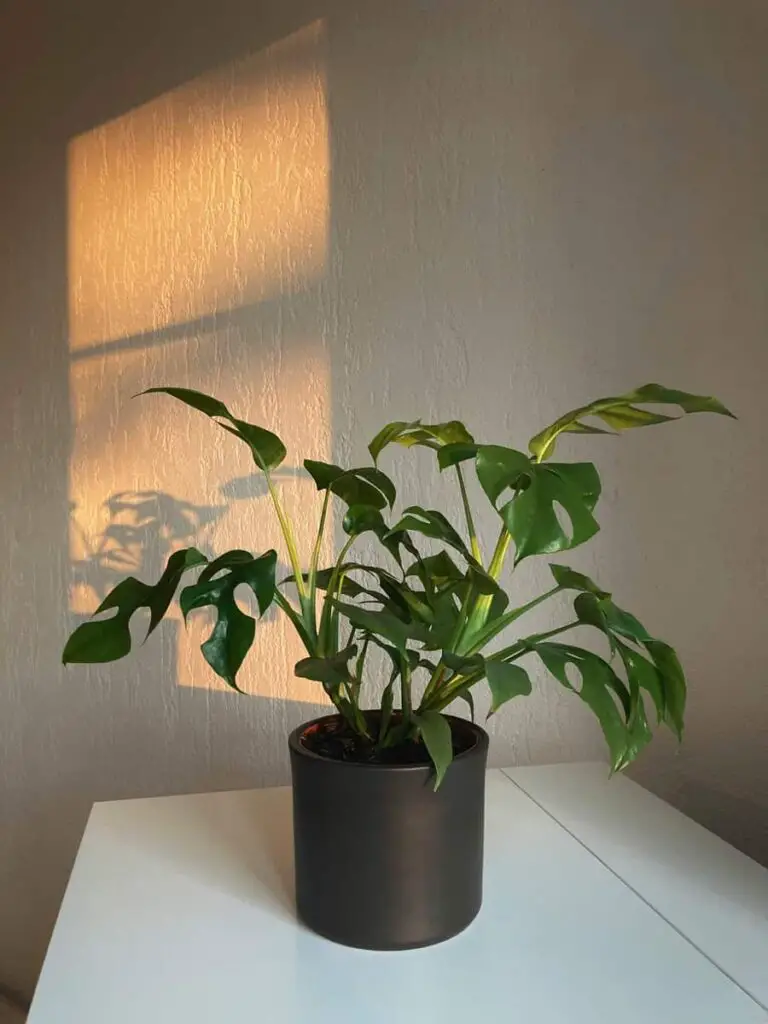
Monstera, also known as “Adam’s rib” or “Swiss cheese plant”, is a tropical plant with a lush appearance and distinctive physical characteristics.
Its leaves are large, glossy and uniquely shaped, with cuts and perforations that often resemble windows or holes, giving it a fascinating and decorative look.
These leaves can grow to impressive sizes, making Monstera an eye-catching plant in any indoor space. Additionally, its aerial roots are robust and can grow downward from the stems, adding a tropical and wild look to its overall appearance.
2. Helecho de Boston
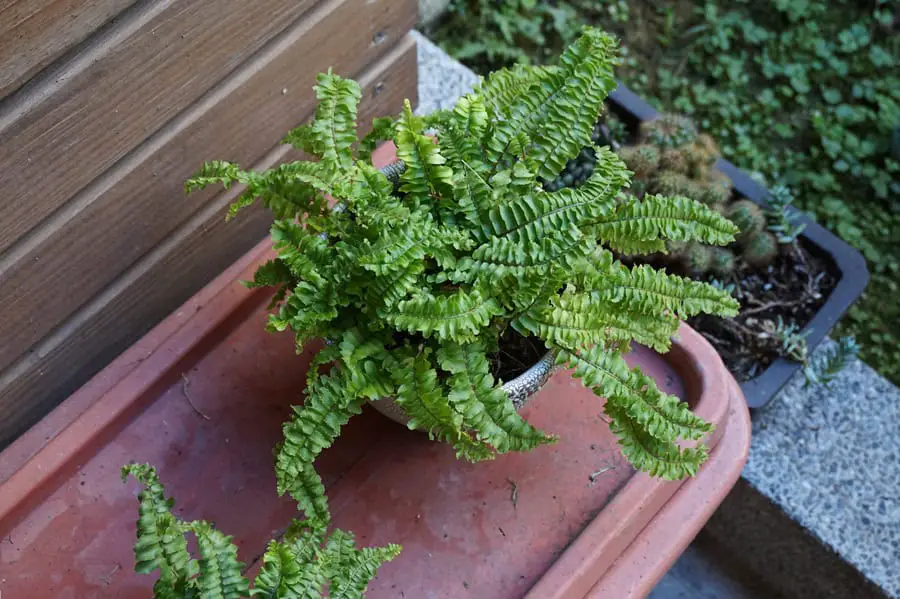
The Boston fern (Nephrolepis exaltata) is a plant that is distinguished by its unique and attractive physical characteristics.
Its leaves are long, arched and deep green, with a soft and feathery texture.
Young fronds usually have a rolled appearance and gradually unfold as the plant grows.
Additionally, the Boston fern produces fine, fibrous roots that extend from its rhizome, allowing it to absorb nutrients and water from the soil efficiently.
3. Hedera

Ivy (Hedera) is a climbing perennial plant distinguished by its unique and decorative physical characteristics.
Its leaves are lobed in shape and have a very characteristic appearance, with toothed edges and a thick, fleshy texture.
Depending on the variety, ivy leaves can be dark green, light green, or even variegated with shades of white, yellow or cream.
Ivy produces long, flexible stems that allow it to climb and hang naturally, covering vertical surfaces such as walls, trees or trellises.
Additionally, this plant can develop aerial roots that help it cling to surfaces and absorb nutrients.
4. Columnea
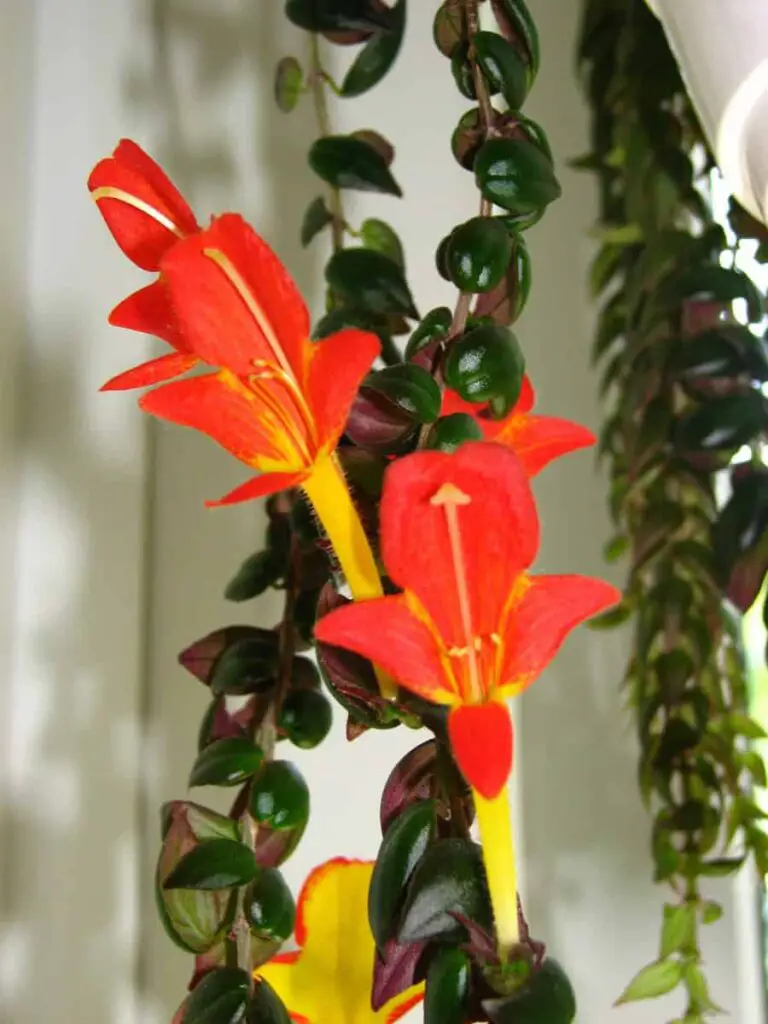
The columnea is an ornamental indoor plant that stands out for its distinctive and attractive physical characteristics.
Its leaves are shiny, oval and deep green, with prominent veins that run across their surface and give them an elegant appearance.
The most notable thing about the columnea is its striking pendulous flowers, which can present a wide range of vibrant colors such as red, orange, yellow or pink.
These flowers are tubular in shape and can be decorated with dots or stripes, which makes them very attractive to pollinators such as hummingbirds and butterflies.
Columnea produces thin, pendulous stems that allow it to grow in a cascading manner, making it an excellent choice for growing in hanging pots or suspended baskets, adding a touch of beauty and vitality to any indoor space.
5. Platycerium bifurcatum
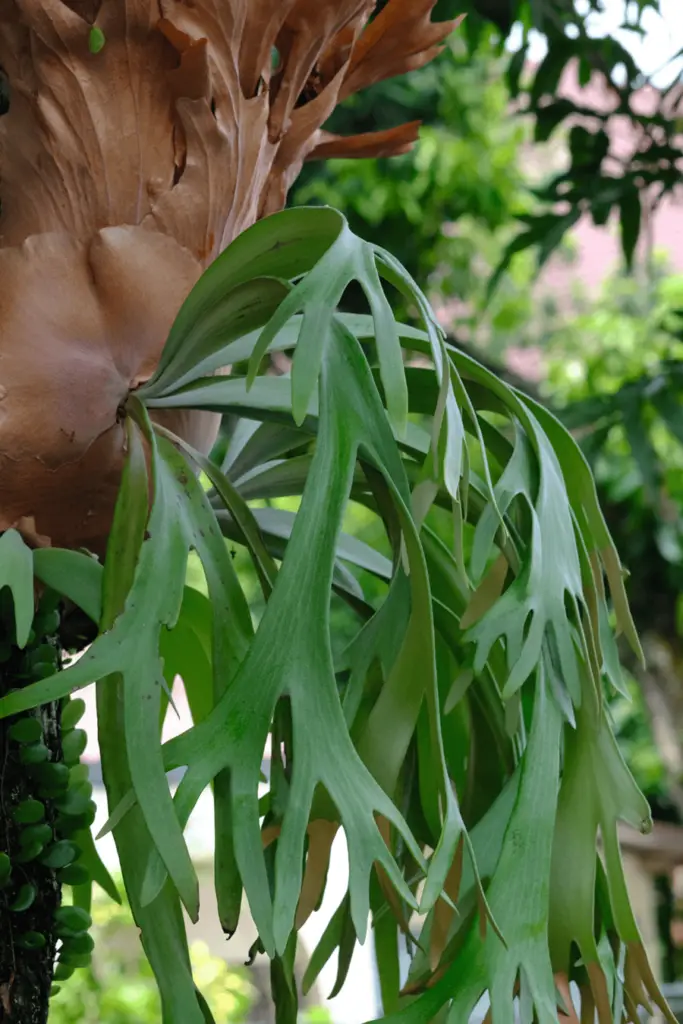
Platycerium bifurcatum, commonly known as elkhorn or staghorn, is a species of fern that, while it can tolerate some shade, prefers bright indirect light conditions.
It is important to note that if placed in full shade conditions, elkhorn may experience slower, less vigorous growth. Therefore, providing the right amount of indirect light will contribute to its optimal health and development.
This fern has a forked structure that resembles the antlers of an elk or a deer, hence its name.
Its fronds are wide and flattened at the base, with lobed segments extending in opposite directions, creating a shape reminiscent of an antler.
6. Asplenium nidus
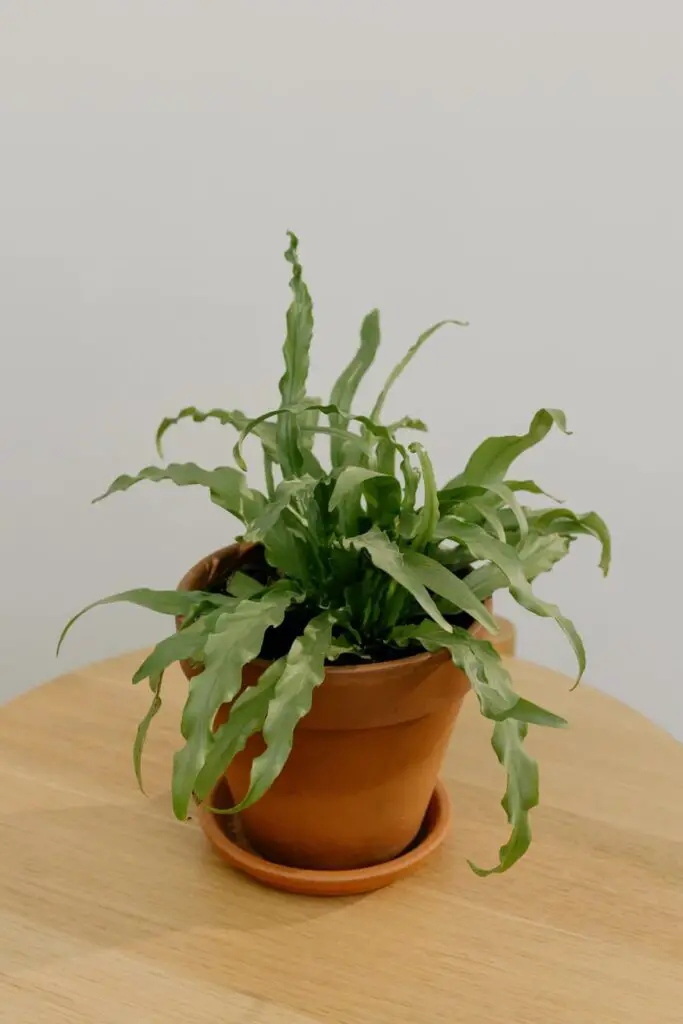
Asplenium nidus is a fern plant that is distinguished by its attractive appearance. Its fronds are large and arched, of an intense and shiny green color, with a leathery and shiny texture.
The leaves emerge in a rosette shape from a fleshy rhizome, creating a lush, tropical appearance. In addition, this species has dark brown sporangia on the underside of the leaves, which are responsible for the reproduction of the plant.
7. Tradescantia pallida
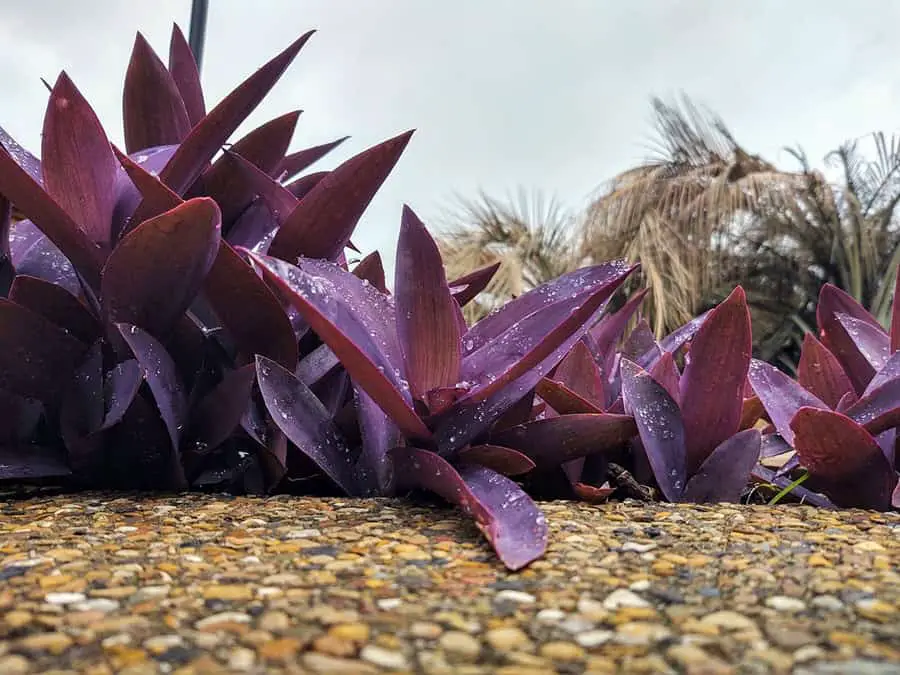
Tradescantia pallida, commonly known as “purple heart”, is a striking looking plant. Its stems are slender and pendulous, creating an elegant, cascading appearance when grown in hanging pots or baskets.
The leaves of this plant are lanceolate, of an intense purple color that stands out in any environment.
In addition, its leaves have a soft and velvety texture, which adds a tactile appeal to the plant. Tradescantia pallida also produces small pink flowers that contrast beautifully with the purple hue of the leaves.
8. Peperomia scandens
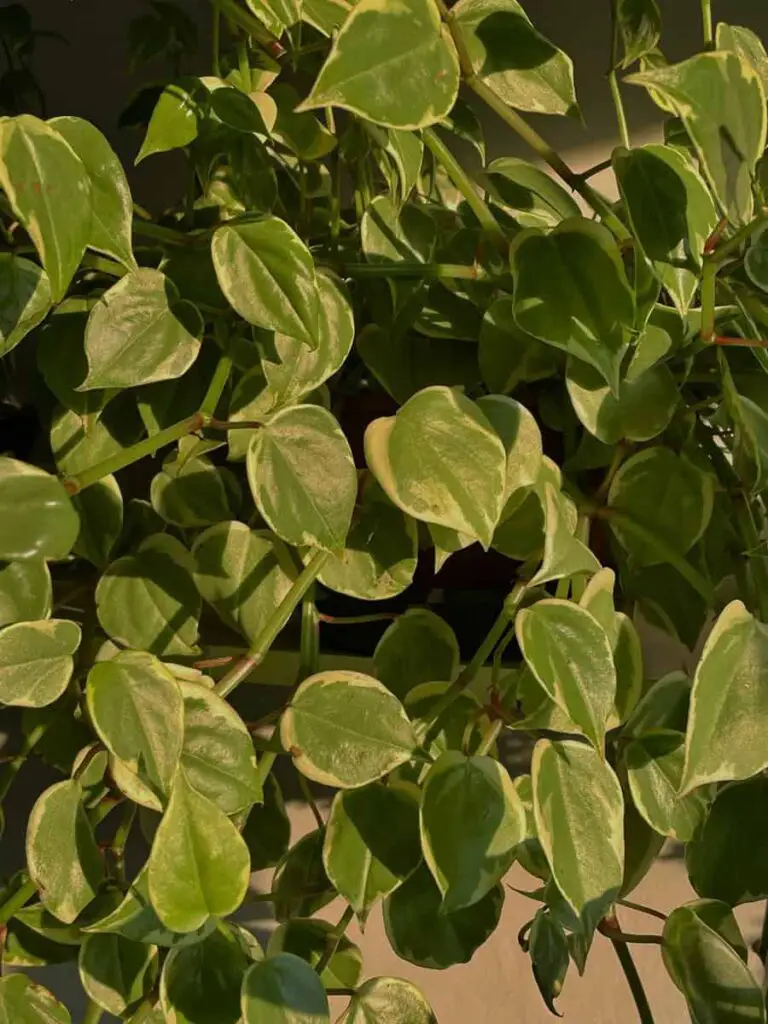
Peperomia scandens is a houseplant distinguished by its attractive foliage and hanging growth habit.
Its leaves are rounded, thick and a shiny dark green, with a soft, fleshy texture that adds a touch of elegance to the plant.
The leaves may also have a slight shine that highlights their beauty. The stems of Peperomia scandens are slender and pendulous, making it perfect for hanging pots or baskets, creating a lovely decorative effect.
This plant is relatively compact and slow growing, making it an excellent option for indoor spaces with indirect light or partial shade, where it can show off its attractive foliage and add a touch of freshness and nature to the environment.
9. Streptocarpus saxorum

Streptocarpus saxorum is a particularly charming variety of Streptocarpus that is distinguished by its distinctive physical characteristics.
This plant has elongated, lanceolate leaves that are arranged in the shape of a compact rosette, with an intense and bright green color that often contrasts with the lighter veins that run through the leaves.
The flowers of Streptocarpus saxorum are another highlight, with a variety of colors ranging from deep blue and purple to pink and white, sometimes with marked striped or mottled patterns.
Streptocarpus saxorum is a species of Streptocarpus that, while it prefers bright indirect or partial light conditions, can also tolerate some shade.
10. Lobelia erinus

Lobelia erinus prefers to grow in places with partial sunlight or bright indirect light. Although it can tolerate some shade, such as that found in shaded areas for part of the day, it will not grow optimally in full or long shade conditions.
Lobelia erinus is an annual plant that stands out for its charming appearance and its vibrant spike-shaped flowers. Its stems are thin and erect, reaching heights of around 15 to 30 centimeters, which gives it a compact growth habit.
The flowers are the focal point of this plant, they come in a wide variety of colors including blue, white, pink, purple and violet, bringing a burst of color to the garden. The shape of the flowers, in vertical spikes with petals that open upward, gives the plant a delicate elegance.
Conclusion
At the end of the day, shade-loving hanging plants are a valuable option for anyone looking to add plants to their spaces, even in areas with limited light.
They are versatile and hardy plants that can thrive in less than optimal light conditions, whether indoors with indirect light or shady outdoors. From hanging ferns to peperomias and other varieties, these plants offer an easy and attractive way to beautify shady corners in gardens, patios and homes.
When choosing and caring for these plants, it is essential to take into account their specific light, soil and water requirements to ensure their optimal health and development. Additionally, by combining different species in creative hanging arrangements, we can create green, welcoming spaces that enhance the aesthetics and ambiance of any location.
